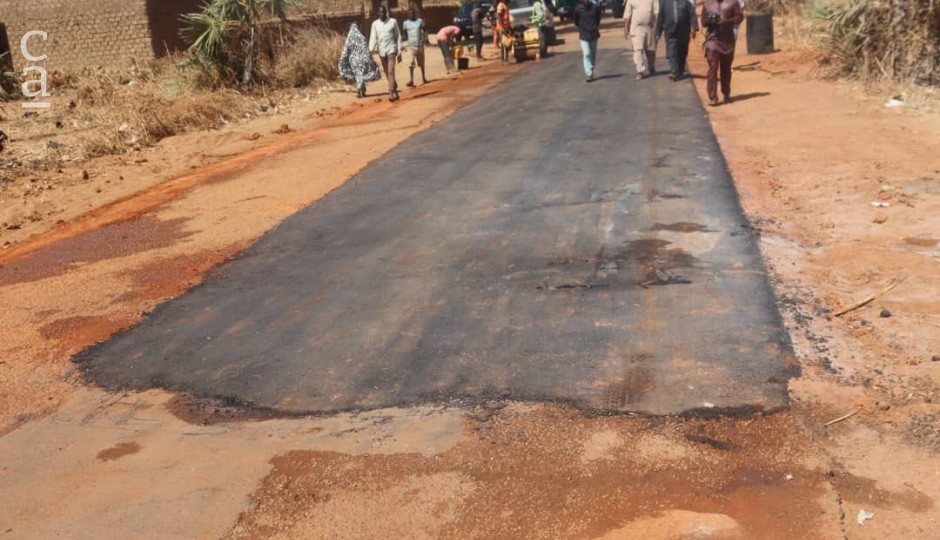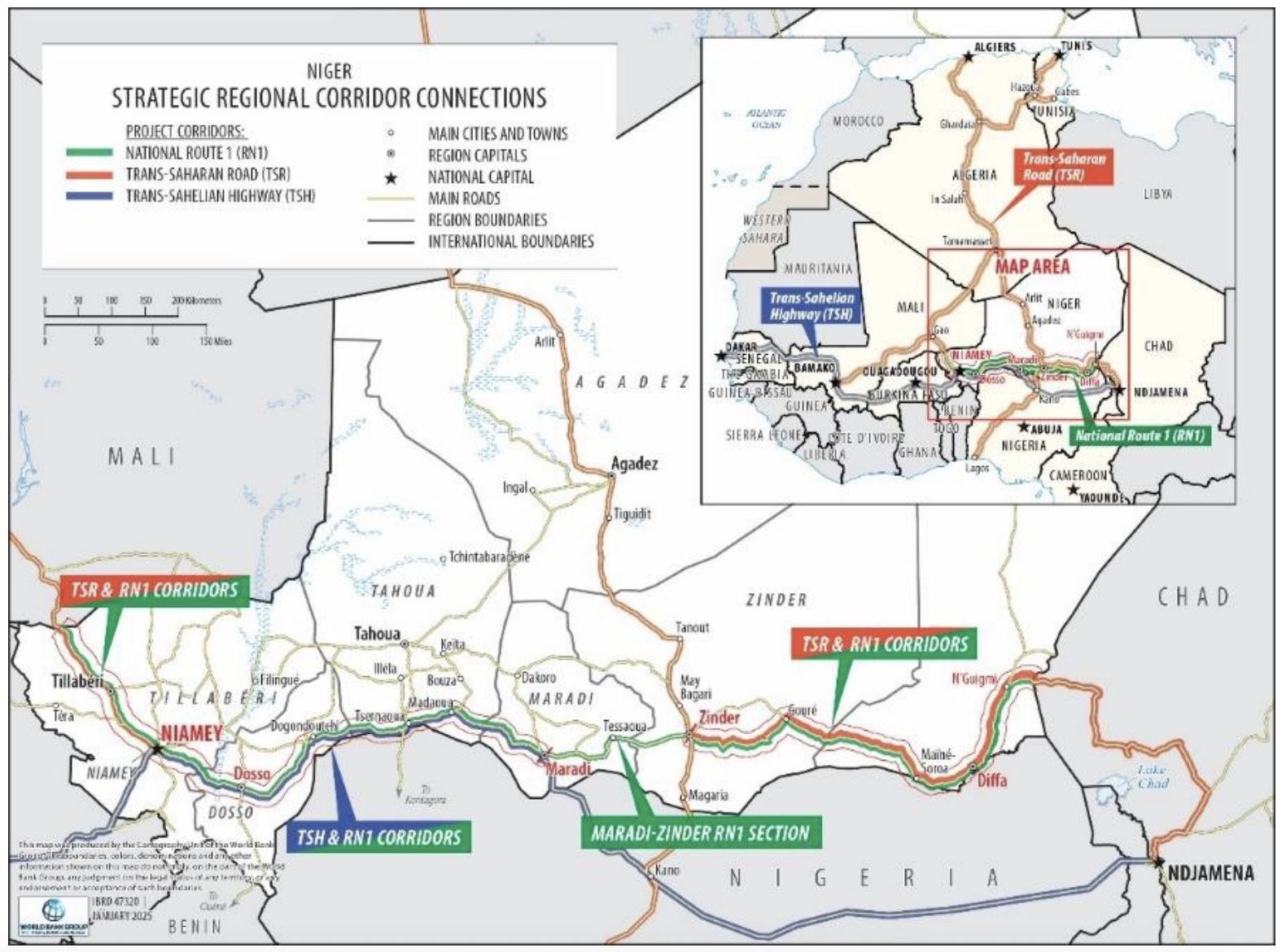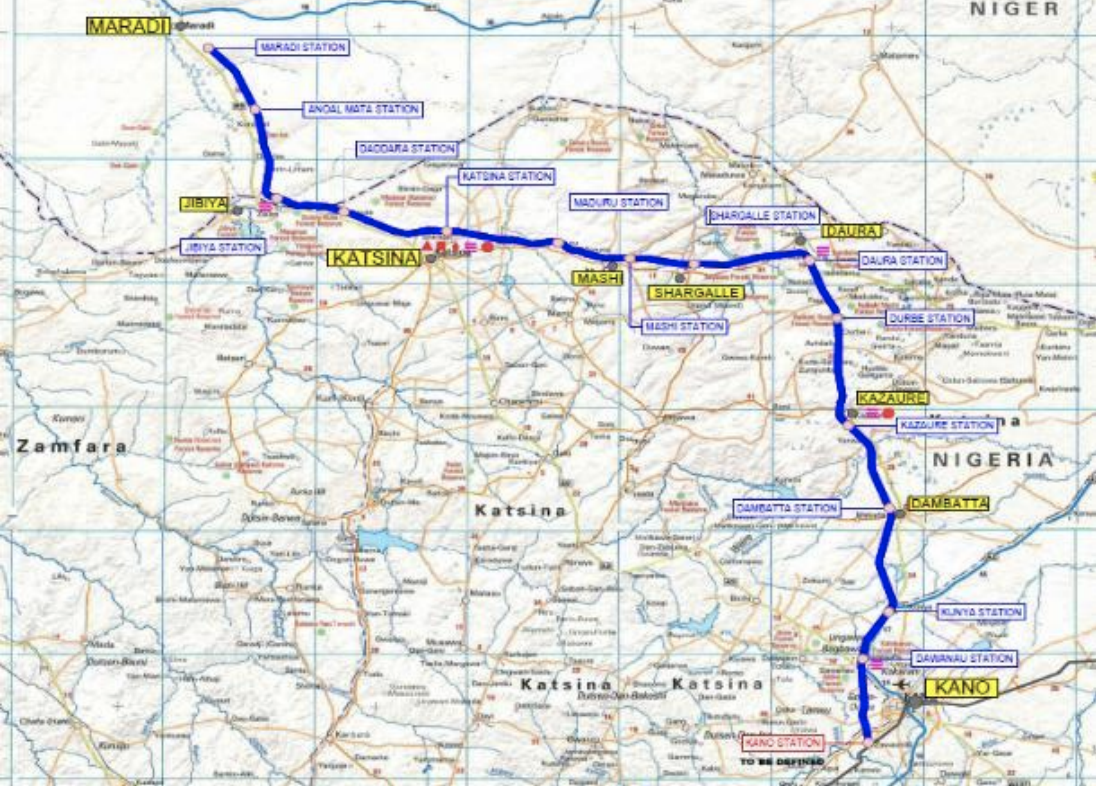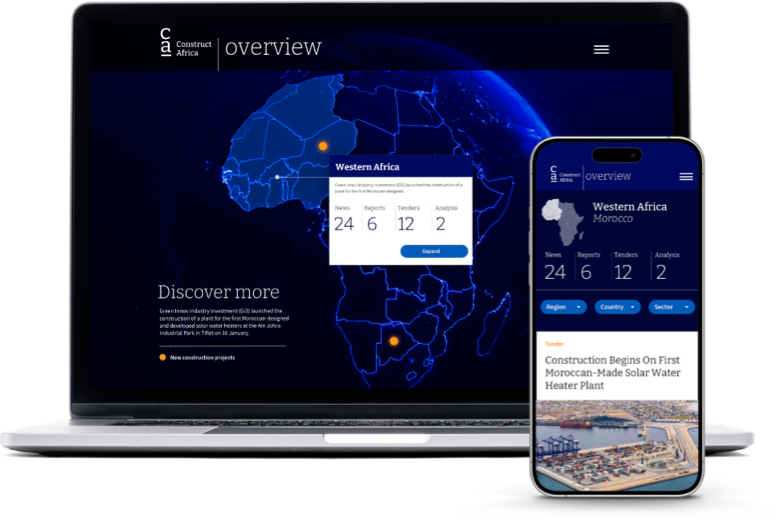Niger Plans Upgrade Of Key Trade Route
FreeThe 1,800km RN1 serves as the artery for about 70% of the country’s population.

Niger’s Ministry of Transport and Equipment is planning to invite bids by 5 August for the rehabilitation and upgrade of National Road 1 (RN1) in the country’s south, according to a procurement plan published in late June.
The work is part of the World Bank-funded Southern Niger Integration and Connectivity Project (PICSN), which was approved in late May and aims to improve climate-resilient road connectivity and enable value chain logistics development in southern Niger.
The RN1 section that will be rehabilitated is the 232.9km Maradi-Zinder road, which will be widened and upgraded. Work is divided into four lots – the 40.9km Maradi-Tchadoua, 83.9km Tchadoua-Tessaoua, 60.7km Tessaoua-Takieta and 47.4km Takieta-Zinder sections.
Bids from contractors are expected to be opened on 16 September and the contracts signed by 3 January 2026.
In early June, the ministry invited interest from consultants for four contracts covering the provision of control and monitoring services for the rehabilitation of National Road 1 (RN1) in the country’s south. Four firms will be selected to carry out the work monitoring and control services, which are expected to be completed in 27 months.
The 1,800km RN1 is the lifeline of Niger, which heavily depends on road infrastructure and the agropastoral sector to drive socioeconomic development. The highway serves as the artery for about 70% of its population and supports close to 88% of its agricultural activities.
The RN1 comprises the following sections: the Malian border-Niamey section, which is part of the Trans-Saharan Road (TSR); the Niamey-Maradi section, which is part of the Trans-Sahelian Highway (TSH); the Maradi-Zinder section, which connects the TSH and TSR within the RN1; and the Zinder-Chadian border section, which is also part of the TSR corridor. Ensuring all-year resilient connectivity between the RN1, the TSH and the TSR corridor will improve access, agropastoral produce flow and the trade potential of selected value chains at the subregional level.

Source: Project appraisal report, April 2025
The RN1 was affected by the 2024 floods and is currently in a degraded state, with a travel speed of less than 60 km/h.
The PICSN will also finance the rehabilitation and upgrading to climate-resilient standards of about 25km of feeder roads connecting to the Maradi-Zinder section and 500km of rural roads connecting to the rural hinterland of the RN1 basin in the Maradi-Zinder regions, as well as the construction of 50km of concrete block gutters in areas with high flood exposure.
In addition, the project will finance technical studies and environmental and social (E&S) instruments for the rehabilitation and upgrading of paved road sections to climate-resilient standards. These roads will be selected during implementation and will prioritise RN1 basin climate-resilient connectivity. They could include the Zinder bypass road, the Maradi junction at the RN1, the 50km Maradi-Dan Issa-Nigeria border route and the 70km Takieta-Matamaye-Nigeria border road.
The PICSN will also finance consultant services to prepare technical studies and E&S instruments for the construction of a border post in Magaria and a dry port in Maradi. The proposed dry port will complement work currently underway on the 284km Kano-Maradi railway, which links Maradi to Kano in northern Nigeria. The project is fully financed by the government of Nigeria. Construction began in February 2021 on the US$1.96 billion scheme, which is scheduled for completion in June 2026.
Mota-Engil Nigeria has been appointed to develop and construct the main line of the network, which will connect three federal states in northern Nigeria – Kano, Jigawa and Katsina. The railway includes a 108km branch line running between Kano and Dutse, the capital city of Jigawa state.
Coupled with the dry port in Maradi, this infrastructure could create a seamless, efficient export corridor linking Niger to Nigeria, eliminating last-mile connectivity challenges.
The implementing agency for the PICSN is the transport ministry and overall project completion is planned in September 2031.
An estimated 16.4 million people (5.2 million in Niger and 11.2 million in Nigeria) living within 150km of the Maradi-Zinder section of the RN1 are expected to benefit indirectly through improved climate-resilient connectivity, access to services and infrastructure, and increased trade and economic opportunities.

Source: Project ESIA report, August 2024
Top photo: Road in Niger (Source: Facebook @ Niger Ministry of Transport and Equipment)
Discover
myConstructAfrica
Your one-stop-shop for information and actionable intelligence on the construction and infrastructure pipeline in African countries
- News, analysis and commentary to keep up-to-date with the construction landscape in Africa.
- Industry Reports providing strategic competitive intelligence on construction markets in African countries for analysts and decision-makers.
- Pipeline Platform tracking construction and infrastructure project opportunities across Africa from conception to completion.
- Access to contact details of developers, contractors, and consultants on construction projects in Africa.
- News and analysis on construction in Africa.
- Industry Reports on construction markets in African countries.
- Pipeline platform tracking construction and infrastructure projects in Africa.
- Access to contact details on construction projects in Africa.


